Peace be with you my friends! Now that I have shared with you about the types of spirits commonly found in New Orleans Voodoo, I'd like to share with you how these spirits are commonly served and put to work on a living person's behalf. Included in this post is a description of the misa espirtual service that I frequently offer to clients.
A person might go to a Spiritist to seek help in resolving a personal matter or just to receive a general spiritual forecast.
In New Orleans, Voodooists serve their spirit guides much according to the traditional Kardecian method, based on the teachings of 19th century French philosopher Allan Kardec who I have discussed in a previous post. They recite prayers for the dead as written in Kardec’s books, and offer them white candles and glasses of water, but there are several additions to New Orleans Spiritism that clearly are of African origin, which again shows the syncretic nature of Voodoo. Often, a Spiritist will have an altar in his home called a “bóveda” which will be dedicated entirely to his spirit guides and not to the lwa or the saints.  On the altar there will be nine glasses filled with water, and the glass in the center will be the largest on top of which rests a crucifix to represent God, the source of all life. There may be photographs of deceased relatives and images of ones personal spiritual guides, such as statues of Indians or Spanish Flamenco dancers to represent Gypsies and of course representations of African spirits. Every Monday, the Spiritist will make an offering of libations and food to the dead, making sure that no salt is added to the food, since this weakens the powers of the spirit guides and drives them away. Salt neutralizes vibrations both good and bad, and since spirits are pure vibration, their energy is greatly depleted when they come into contact with salt. Salt does however have its uses in Voodoo. I often recommend that a person take a salt bath to be cleansed of all negativity, but the good is also washed away, therefore it is advised that a blessing with holy water be given after each salt bath.
On the altar there will be nine glasses filled with water, and the glass in the center will be the largest on top of which rests a crucifix to represent God, the source of all life. There may be photographs of deceased relatives and images of ones personal spiritual guides, such as statues of Indians or Spanish Flamenco dancers to represent Gypsies and of course representations of African spirits. Every Monday, the Spiritist will make an offering of libations and food to the dead, making sure that no salt is added to the food, since this weakens the powers of the spirit guides and drives them away. Salt neutralizes vibrations both good and bad, and since spirits are pure vibration, their energy is greatly depleted when they come into contact with salt. Salt does however have its uses in Voodoo. I often recommend that a person take a salt bath to be cleansed of all negativity, but the good is also washed away, therefore it is advised that a blessing with holy water be given after each salt bath.
In addition to serving the spirit guides at the bóveda, the Spiritist uses this altar to conduct divination sessions with the help of the dead. A person might go to a Spiritist to seek help in resolving a personal matter or just to receive a general spiritual forecast. Voodoo doctors will often have what is called a “baguette des morts.” This instrument consists of a stick adorned with multicolored ribbons with bells tied to the end. The Spiritist shakes the stick and bangs it against the floor to call the spirits and if they are willing, they may take possession of his body and use him as a mouthpiece. Such possession often occurs during what is called a misa espiritual which would be the equivalent of a church service for the Spiritist religion. A personal will often order a misa when in need of spiritual counsel or if a serious problem arises. At one of these ceremonies, several people will gather at the house of a Spiritist or Voodoo doctors and will often each bring a various dishes of food as well as music and drinks to create a party-like atmosphere. After eating, they will sit in a circle with the person for whom the service is intended sitting closest to the spiritual altar. Several offerings of food, flowers, incense and alcoholic drinks will be laid out on a table covered with white cloth on which the bóveda also rests. The service begins with the sign of the cross and the recitation of the Our Father. Then they will often sing a song in honor of their departed ancestors and spirit guides. The following is a popular song in honor of the dead. Originally it was a hymn popularly sung at African-American funerals to accompany prayers and litanies for the deceased, but today is commonly used as part of a Spiritist or Voodoo service.
Adieu, Adieu cher Frère
Maman, Maman, il é mo
Me nou a reoua o cieux
No Seigneur m’a dit
Li ora pitye de nou, Maman
Goodbye, goodbye dear brother
Mother, Mother, he is dead.
But we will meet again in Heaven
Our Lord told me,
He will have mercy on us, Mother
After the Spirits and ancestors are greeted, one of them may wish to take possession of the officiate and offer advice or request prayers from those present. Then the Spiritist will proceed to pray over the person who has ordered the misa. The presiding Spiritist passes his hands over the client and orders unclean spirits and negative energy to depart from this individual. This cleansing is also meant to remove the evil eye or any hexes than may have been placed on this person. Spiritists believe that the negativity released from those present is trapped in the glass dish of water, which is immediately tossed out the back door to prevent it from being reabsorbed. The service is concluded with the recitation of more prayers, a formal thanking of the spirits and the sign of the cross. The guests return to their homes and the Spiritist is paid a fee for his services. He wraps the food offerings in a white cloth and disposes of them at the nearest cemetery. Within the next couple of days, he will be sure to offer extra candles and prayers to thank his spirits for their role in the misa.
Through the course of his practice, the Spiritist may serve several spirits, and often times, according to Kardec’s teachings; his guides will reach a level of elevation that will put them in the presence of God and will cease to be spirits, but “ascended masters,” more commonly known as saints. According to Kardec, these beings can no longer be invoked as spirit guides, but will be truly grateful and bless the Spiritist for his role in their heavenly elevation, when one’s spirit guides move on, more often arrive to take their place.
A person may have a misa performed from a distance without his or her presence required to resolve a certain issue and also to ascertain the identities of his or her spirit guides. If you would be interested in having a misa performed for achieve a certain goal, restore the flow of positive energy to your life and learn more about your spirit guides, please do not hesitate to contact me. I look forward to hearing from you. Until then, may peace and abundant blessings surround you!
The Spirit Guides of New Orleans Voodoo-Part III-The European Spirits
Peace be with you my friends! I just wanted to take the time to post a brief entry to bring to a close my series of posts of the types of spirit guides in New Orleans Voodoo. We have spoken about the Native-American and African spirits, but today I just wanted to talk briefly about the white European spirits in New Orleans Voodoo.
When European spirits appear in a spiritual pantheon they are usually gypsies or nuns.
There are very few spirits of European origin served by Voodooists, possibly because the religion itself was originally practiced as a means of cultural survival in a society that looks down upon those who refuse to assimilate. When European spirits appear in a spiritual pantheon they are usually gypsies or nuns.
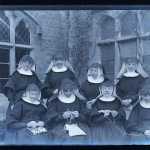
 Gypsy spirits are often served by those who specialize in divination and these individuals often possess astounding clairvoyant abilities. Their tools of divination, playing cards, sea shells, crystals balls etc. will often be consecrated to their gypsy spirits who will speak to them directly through these media. I personally have a Gypsy spirit who appears to me dressed in yellow and helps me during spiritual consultations and in performing love magic. She has been so influential if fact, that she has even led me to Eastern Europe to study gypsy culture, language and magic. Nuns appear from time to time in a Voodoo Doctor’s pantheon and no particular power is attributed to them, other than the reassuring presence of God’s grace in all of our lives.
Gypsy spirits are often served by those who specialize in divination and these individuals often possess astounding clairvoyant abilities. Their tools of divination, playing cards, sea shells, crystals balls etc. will often be consecrated to their gypsy spirits who will speak to them directly through these media. I personally have a Gypsy spirit who appears to me dressed in yellow and helps me during spiritual consultations and in performing love magic. She has been so influential if fact, that she has even led me to Eastern Europe to study gypsy culture, language and magic. Nuns appear from time to time in a Voodoo Doctor’s pantheon and no particular power is attributed to them, other than the reassuring presence of God’s grace in all of our lives.
This post brings to a close my discussion on the types of spirit commonly found in New Orleans Voodoo. This is by no means and exhaustive list and spirits from all background and cultures can pop up in out spiritual pantheon. If you are interested in having an misa espiritual performed to learn the identity of your spirit guides, please don’t hesitate to contact me. As always, I wish you peace, joy and the sweetest of blessings!
The Spirit Guides of New Orleans Voodoo-Part II-The African Spirits
Peace be with you my friends! Today I would like to continue my series of posts on the types of spirit guides commonly found the New Orleans Voodooist's pantheon of magical helpers. We have already discussed the importance of the Native-American spirits and now I will share with you some information on the most common spirit guides of African origin.
High John the Conqueror and Candelo are two powerful sprits in New Orleans voodoo.
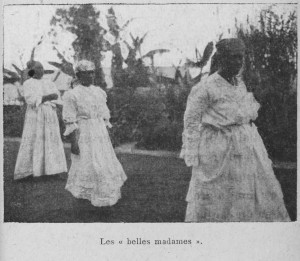 It goes without saying that Voodooists in New Orleans serve and work with a huge pantheon of African spirits. This spirits serve as a link to the mother land and come directly from the ancestral paradise of Guinea, the final resting place of all souls after proper purification and elevation. The first category is young African women who often lived in a state of slavery in life. One might petition such a spirit for help in a love related matter or for a favorable outcome to a difficult situation. The second category is the “madama” who represents the stereotypical plantation Mammy. Those who are blessed to have one of these matronly figures in their spiritual repertoire often have clairvoyant powers and live long, healthy and protected lives.
It goes without saying that Voodooists in New Orleans serve and work with a huge pantheon of African spirits. This spirits serve as a link to the mother land and come directly from the ancestral paradise of Guinea, the final resting place of all souls after proper purification and elevation. The first category is young African women who often lived in a state of slavery in life. One might petition such a spirit for help in a love related matter or for a favorable outcome to a difficult situation. The second category is the “madama” who represents the stereotypical plantation Mammy. Those who are blessed to have one of these matronly figures in their spiritual repertoire often have clairvoyant powers and live long, healthy and protected lives.
Male African spirits while rare, are still severed by Voodooists and Spiritists. They usually appear in the form of elderly men with white hair that represent wisdom and tradition. Those who serve such spirits often have a sharp knowledge of root work and herbal medicine as well African and Southern folklore. Two male African spirits that have achieved a level of high fame are Candelo and High John the Conqueror. Candelo is represented as a little, skinny, ever-smiling, elederly African man. He is also associated with San Carlos Borromeo of the Catholic faith. Those who serve Candelo often exhibit superhuman qualities while under possession. My friend Valerie from Puerto Rico is a devotee of Candelo and I have seen her consume an entire bottom of rum without becoming succumbing to alcohol poisoning and extinguish a lit cigar on her tongue without being burned while under possession. Candelo often blesses his followers with prophetic dreams and unparalleled good luck.
High John the Conqueror is more from the folklore of the American South rather than from Voodoo per se and he is completely unknown in Haitian Vodou. According to legend, High John was a powerful wizard from what is today Angola, when he saw that his people were being taken into bondage he decided to go with them to America to show that he had not abandoned them. In the American south, he would fly from plantation to plantation helping slaves escape or get revenge on a cruel master. Therefore he is invoked today for cases of justice. I often perform services to High John for clients who are involved in legal battles and I have had phenomenal results.
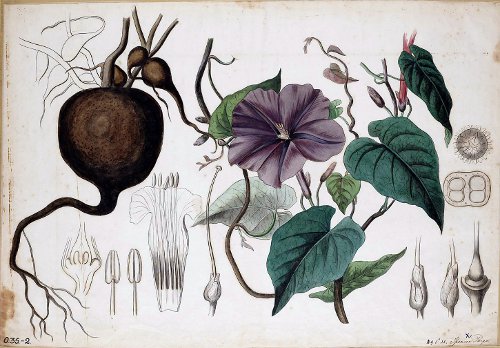
I know a woman named Susan who was going through a nasty divorce from her abusive husband of twenty years and it looked like she was going to lose her house. I performed a consultation and immediately High John the Conqueror was all over the case! I instructed Susan to write her husband’s name on a piece of paper and place it in the freezer to prevent him from doing further harm. Then I gave her a purple pouch containing a piece of High John the Conqueror root (a bulbous root associated with this folkloric figure). Susan carried this charm to court and the case swung mysteriously in her favor and her husband’s bankruptcy plans were foiled and she was awarded the house as part of the settlement. Due to the fact that he is not of Caribbean origin, High John has no Catholic counterpart and I have yet to see him depicted in statuary, but his color is purple and his day of the week is Wednesday.
I hope you have enjoyed learning a bit about the common spirit guides of African origin and in the next installment I will write about the spirit guides or European origin. I thank you for taking the time to read my blog and if you would like to determine the identity of the spirits that surround you and learn how to put them to work on your behalf, please do not hesitate to contact me for a reading. Peace and blessings!
The Spirit Guides of New Orleans Voodoo: Part I-The Native-Americans
Peace be with you my friends! Often I have blogged about various aspects of New Orleans Voodoo practice and their historical roots. Today I would like to share with you part of an article I wrote several years ago about the influence of the 19th century French philosopher Allen Kardec and his doctrine of Spiritism on New Orleans Voodoo and the types of spirit guides commonly found in New Orleans. In this first installment, I will be discussing the reverence for Louisiana’s first inhabitants, the Native-American people.
Voodoo pays a great deal of respect to the land and its past inhabitants.
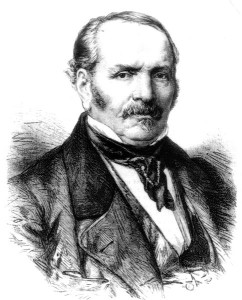 In addition the traditional African and Catholic practices, Voodoo, being true to its syncretic nature, also adopted and incorporated the teachings of 19th century French penseur Allan Kardec into its repertoire of beliefs and practices. Allan Kardec was the penname of Hippolyte Léon Denizard Rivail the founder of the doctrine of Spiritism, which is followed by many as a religion. Kardec taught that after death, souls remain in a state of limbo in which they must work off their karmic debt in order to free themselves of the excess spiritual weight that inhibits them from moving closer to God. Souls may work off their karmic debt by helping individuals on the earthly plane and in rare cases it may be necessary for a soul to become incarnate again to atone for serious sins. Spiritism also teaches that on Earth, people may help to elevate their spirit guides by offering prayers and by leaving glasses of water and white candles in a special place in their home reserved for meditation. By working with one’s spirit guides, it is possible to attain material success in this life and a higher station in the afterlife. Kardec even tried to reconcile his doctrines to traditional church teachings in his work, The Gospel According to Spiritism. Despite his scholarly attempt, Spiritism was condemned by the church hierarchy but nevertheless found a following among the members of European high society who enjoyed gathering in their parlors and communing with spirits as a form of entertainment. While Spiritism was little more than a passing fad in Europe, Kardec’s works were translated into Spanish and Portuguese and the Spiritist religion soared to undreamed-of levels of popularity in Latin America where it still has millions of followers. One of the places Spiritism caught on was in New Orleans where adherante to Voodoo eagerly incorporated Kardec’s teachings into their own eclectic practices, perhaps because some of his doctrines were right in line with their previously held beliefs concerning the state of Purgatory and ever older ideas handed down from their African ancestors .
In addition the traditional African and Catholic practices, Voodoo, being true to its syncretic nature, also adopted and incorporated the teachings of 19th century French penseur Allan Kardec into its repertoire of beliefs and practices. Allan Kardec was the penname of Hippolyte Léon Denizard Rivail the founder of the doctrine of Spiritism, which is followed by many as a religion. Kardec taught that after death, souls remain in a state of limbo in which they must work off their karmic debt in order to free themselves of the excess spiritual weight that inhibits them from moving closer to God. Souls may work off their karmic debt by helping individuals on the earthly plane and in rare cases it may be necessary for a soul to become incarnate again to atone for serious sins. Spiritism also teaches that on Earth, people may help to elevate their spirit guides by offering prayers and by leaving glasses of water and white candles in a special place in their home reserved for meditation. By working with one’s spirit guides, it is possible to attain material success in this life and a higher station in the afterlife. Kardec even tried to reconcile his doctrines to traditional church teachings in his work, The Gospel According to Spiritism. Despite his scholarly attempt, Spiritism was condemned by the church hierarchy but nevertheless found a following among the members of European high society who enjoyed gathering in their parlors and communing with spirits as a form of entertainment. While Spiritism was little more than a passing fad in Europe, Kardec’s works were translated into Spanish and Portuguese and the Spiritist religion soared to undreamed-of levels of popularity in Latin America where it still has millions of followers. One of the places Spiritism caught on was in New Orleans where adherante to Voodoo eagerly incorporated Kardec’s teachings into their own eclectic practices, perhaps because some of his doctrines were right in line with their previously held beliefs concerning the state of Purgatory and ever older ideas handed down from their African ancestors .
True to their instinct of survival and reverence for the past, Voodooists Africanized the Spiritist pratices as outlined by Kardec. This can be seen most clearly in the categories of spirits served by New Orleans Voodoo practitioners.
 The Indian Sprits-As in all animistic religions, Voodoo pays a great deal of respect to the land and its past inhabitants. For this reason, on many spirit altars in New Orleans you will find statues of stereotypical Native American figures such as the medicine man, the chief and the princess; and often Indian-head pennies are placed on the altar. Most likely, these figures bear little resemblance to the indigenous people who once inhabited the region, but they are nevertheless included in the pantheon of “les morts” as a sign of respect for those who were there long before the Europeans or the Africans. People who venerate Indian spirits are often endowed with curative powers and blessed with good fortune. In New Orleans popular culture, the Indian figure represents good luck and Mardi Gras parades would not be complete without scores of fluorescent feather and twinkling sequin bedecked Indians.
The Indian Sprits-As in all animistic religions, Voodoo pays a great deal of respect to the land and its past inhabitants. For this reason, on many spirit altars in New Orleans you will find statues of stereotypical Native American figures such as the medicine man, the chief and the princess; and often Indian-head pennies are placed on the altar. Most likely, these figures bear little resemblance to the indigenous people who once inhabited the region, but they are nevertheless included in the pantheon of “les morts” as a sign of respect for those who were there long before the Europeans or the Africans. People who venerate Indian spirits are often endowed with curative powers and blessed with good fortune. In New Orleans popular culture, the Indian figure represents good luck and Mardi Gras parades would not be complete without scores of fluorescent feather and twinkling sequin bedecked Indians.
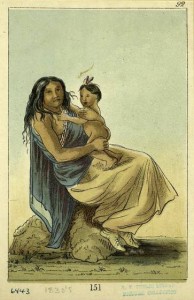 I have a friend named Angie in Massachusetts who is a practitioner of Santería and Spiritism and she severs several native spirits. About six years ago, she moved to a house in Deerfield, Massachusetts, a region known to be haunted by the ghosts of Native Americans slaughtered during the French and Indian War. Shortly after moving in, she began to hear the persistent sound of drums at night and often smell wood smoke when no fires were lighted. Her five-year-old son began to complain of nightly visits from frightening, imposing figures that would materialize in his room as he was trying to sleep. Angie attributed this to an overactive imagination until one day while she was hanging clothes to dry she looked over her shoulder to see a smiling Indian woman with a child standing around a campfire. Then in an instant both of them vanished along with the fire.
I have a friend named Angie in Massachusetts who is a practitioner of Santería and Spiritism and she severs several native spirits. About six years ago, she moved to a house in Deerfield, Massachusetts, a region known to be haunted by the ghosts of Native Americans slaughtered during the French and Indian War. Shortly after moving in, she began to hear the persistent sound of drums at night and often smell wood smoke when no fires were lighted. Her five-year-old son began to complain of nightly visits from frightening, imposing figures that would materialize in his room as he was trying to sleep. Angie attributed this to an overactive imagination until one day while she was hanging clothes to dry she looked over her shoulder to see a smiling Indian woman with a child standing around a campfire. Then in an instant both of them vanished along with the fire.
Angie called me and related the events she and her son had witnessed. We decided to go see Wendy, a longtime friend of ours and renowned practitioner of Wicca, a Celtic Earth based religion. Wendy informed us that the Native American presence was nothing to be feared and that it could be turned into something positive. Together, we went to Angie’s house and prepared an ancestor feast for the ghostly inhabitants. We made small dishes of rice and beans, dumplings, and Indian pudding. We placed the dishes at the edge of the forest with a lighted white candle in the center of each dish. Wendy invoked the spirits and poured three splashes of water on the ground from a metal dish and then made a libation offering of rum. Angie then placed nine shiny pennies next to the food and told the spirits that she wanted to coexist peacefully with them. From that day on, she has maintained a close connection to the Native American spirit world and they have become her protectors and personals guides. On one occasion, while at work a Native spirit appeared to her and admonished her of a situation at home. She left the office in a hurry to arrive at home just in time to see the smoke coming from behind the washing machine due to an electrical malfunction. Thankfully, no damage was done to the house. In accordance with Wendy’s instructions, every Monday night, Angie takes a small amount of whatever food she herself has eaten, and leaves it at the edge of the woods along with a dish of water and a candle. When the candle in extinguished, inevitably an animal, usually a fox or a deer, but occasionally a bear or raccoon, will come and eat the food. Wendy takes this as a sign that she has made friends with the ghostly inhabitants of her land.
I hope you have enjoyed the first installment of this series of education articles. In the next installment, I will discuss the importance of African spirit guides in New Orleans Voodoo. If you would like to learn the identity of your own spirit guides or are interested in having a spirit feast performed, please do not hesitate to contact me.
Saints Martha and Expedite!
Peace be with you my friends! I wanted to take this opportunity to talk about two of my favorite saints, St. Expedite and St. Martha.
Two Very Powerful Saints
I have blogged quite a bit about St. Expedite before, but I just figured I would mention him again since today is Wednesday, the day that is sacred to him. According to legend, Expeditus was a soldier in the Roman army who converted to Christianity and was martyred around 300 AD during the reign of the emperor Diocletian. A demon in the form of a crow appeared to him and tried to get him to put off his conversion, but Expeditus rebuked the crow and said that he would convert today! For this reason, he is the saint you go to when you are in need of speedy results. He is also know to bless his devotees financially. In Haiti he is associated with the African spirit Baron LaLwa and in New Orleans Voodoo he is related to Baron Samedi, the owner of the cemetery, although most people, myself included, venerate him strictly as a Christian saint.
 In my home, I have a special altar to St. Expedite where I leave a cigarette and a little shot of brandy or rum every Wednesday and ask him to watch over me and bless me with abundance. I don’t smoke so one pack of cigarettes lasts for months! Whenever you invoke St. Expedite with a specific favor, it is customary to make a promise which you must fulfill when your request is granted. I will often promise him some red flowers and Sara Lee pound cake, his favorite treat! I also make a donation to a church or charity in his name and spread his name around to people whenever possible. Some people even publish a thank you note in a local newspaper, although this is much more common with St. Jude.
In my home, I have a special altar to St. Expedite where I leave a cigarette and a little shot of brandy or rum every Wednesday and ask him to watch over me and bless me with abundance. I don’t smoke so one pack of cigarettes lasts for months! Whenever you invoke St. Expedite with a specific favor, it is customary to make a promise which you must fulfill when your request is granted. I will often promise him some red flowers and Sara Lee pound cake, his favorite treat! I also make a donation to a church or charity in his name and spread his name around to people whenever possible. Some people even publish a thank you note in a local newspaper, although this is much more common with St. Jude.
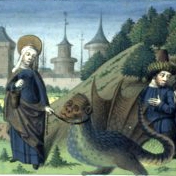 St. Martha has been my special patron saint for years and wherever I go in the world I always carry her icon with me. Martha appears in the bible as the sister of St. Lazarus, whom Jesus rose from the dead and also of Mary of Bethany. She received Jesus into her home and served him while he preached. According to legend, after Jesus’s death and resurrection, she traveled to France with Mary Magdalene and Lazarus to preach the Gospel. Today there is a shrine in southern France where her relics supposedly rest. There is a tradition called the 9 Tuesdays of St. Martha. It is a novena said on 9 consecutive Tuesdays rather than 9 days in a row. Each Tuesday you light a candle or an oil lamp in front of her image and make a request. When you request is granted, it is customary to give her some flowers and make a donation to a church or charity in her name. I have received many blessings from this powerful saint not to mention the warm and protective presence that emanates from her icon.
St. Martha has been my special patron saint for years and wherever I go in the world I always carry her icon with me. Martha appears in the bible as the sister of St. Lazarus, whom Jesus rose from the dead and also of Mary of Bethany. She received Jesus into her home and served him while he preached. According to legend, after Jesus’s death and resurrection, she traveled to France with Mary Magdalene and Lazarus to preach the Gospel. Today there is a shrine in southern France where her relics supposedly rest. There is a tradition called the 9 Tuesdays of St. Martha. It is a novena said on 9 consecutive Tuesdays rather than 9 days in a row. Each Tuesday you light a candle or an oil lamp in front of her image and make a request. When you request is granted, it is customary to give her some flowers and make a donation to a church or charity in her name. I have received many blessings from this powerful saint not to mention the warm and protective presence that emanates from her icon.
If you would like to make a service to St. Expedite or St. Martha, please let me know and I can share with you some prayers for these saints and provide step by step instructions on how to perform the service or I will even perform it for you, if you’d like. I hope you enjoyed learning about these powerful and fabulous saints who I consider the rockstars of the spirit world and I hope you try your own service to one or both of them soon. Thanks for taking the time to visit my blog and may the ancestors and saints bless you abundantly!